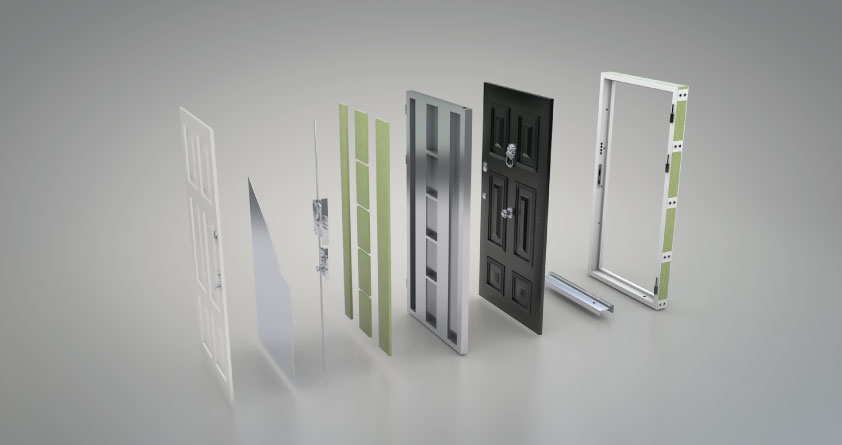Armored doors, or “porte blindate,” are no longer just about security—they are now at the forefront of energy efficiency innovations. By integrating advanced materials and design, these doors can significantly reduce energy loss while enhancing home safety. This article explores the critical aspects of energy-saving armored doors, offering practical advice for choosing the best options to improve insulation, security, and overall energy savings.

What Are Energy-Saving Armored Doors?
Energy-saving armored doors combine robust security features with thermal insulation properties. Their core components include advanced materials such as:
- Steel or reinforced aluminum: For structural strength.
- Polyurethane or mineral wool: As insulation layers to reduce heat transfer.
- Double or triple-glazed inserts (if present): To enhance insulation while allowing natural light.
These doors are designed to minimize heat transfer between the interior and exterior, ensuring consistent indoor temperatures and lowering energy consumption.

Benefits of Energy-Saving Armored Doors
1. Enhanced Thermal Insulation
High-quality armored doors incorporate thermal break technology, reducing energy loss. This is achieved through:
- Multi-layered construction: Combining insulating and sealing materials.
- Weatherproof seals: Preventing drafts and moisture penetration.
- Energy-efficient coatings: Reducing thermal radiation.
2. Superior Security Features
These doors retain their primary purpose of safeguarding your property. Key security attributes include:
- Anti-drill and anti-pick locks.
- Reinforced frames and hinges.
- Multi-point locking mechanisms.
3. Cost Savings
By reducing heating and cooling needs, energy-saving armored doors lead to lower utility bills. They also contribute to long-term energy efficiency goals, adding value to your property.
4. Environmental Sustainability
By cutting energy waste, these doors help reduce your carbon footprint, aligning with global sustainability standards.
Key Features to Look For
1. Insulation Rating
Check the door’s U-value, which measures heat transfer. The lower the U-value, the better the insulation. A U-value of 1.0 W/m²K or lower is ideal for energy-efficient doors.
2. Frame Material
Frames made from thermally broken aluminum or wood with insulating layers ensure reduced heat conduction.
3. Sealing Mechanisms
High-quality armored doors include multi-layer seals around the edges to prevent air and moisture infiltration.
4. Glass Inserts
Opt for low-emissivity (Low-E) glass for any glazed sections. These inserts provide insulation without compromising aesthetics.

How to Choose the Best Energy-Saving Armored Door
Step 1: Determine Your Insulation Needs
Evaluate your home’s energy performance and identify areas prone to heat loss. This helps in selecting a door with the appropriate insulation rating.
Step 2: Verify Certification
Look for certifications such as:
- Energy Star ratings for energy efficiency.
- CE marking for compliance with European standards.
- ISO 9001 and 14001 for quality and environmental management.
Step 3: Assess Security Features
Ensure the door meets international security standards, such as:
- Class 3 or 4 burglary resistance (according to EN 1627 standards).
- Anti-theft features like reinforced hinges and armored locks.
Step 4: Professional Installation
Professional installation is crucial to ensure airtight sealing and optimal performance.
Maintenance Tips for Longevity
To maintain your energy-saving armored door, follow these steps:
- Regular cleaning: Use non-abrasive cleaners to maintain surface integrity.
- Inspect seals and hinges: Check for wear and replace damaged components promptly.
- Lubricate locks: Ensure smooth operation of locking mechanisms.
Conclusion
Energy-saving armored doors represent a perfect blend of security, efficiency, and sustainability. By investing in a high-quality model with advanced insulation and safety features, you not only enhance your property’s protection but also contribute to significant energy savings. Choose wisely, install professionally, and enjoy the benefits of a safer, more efficient home.




























Discussion about this post